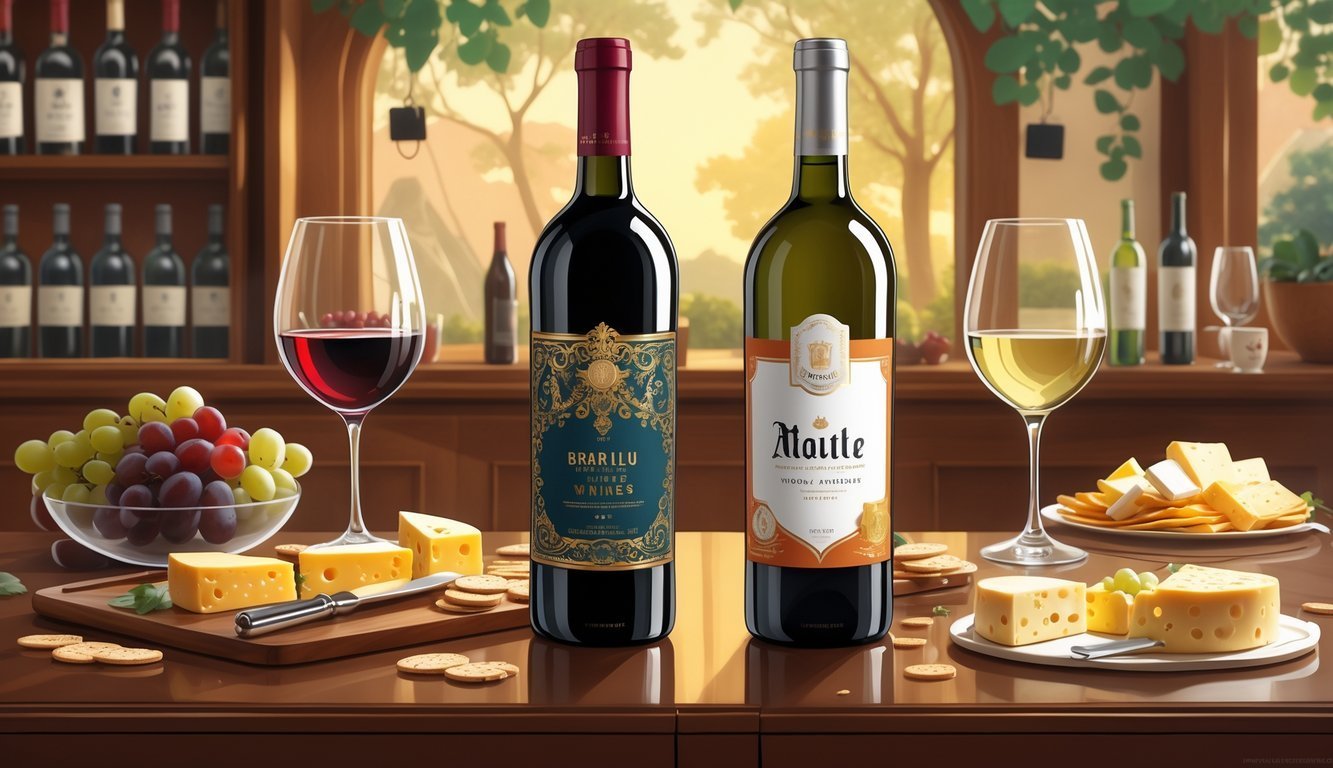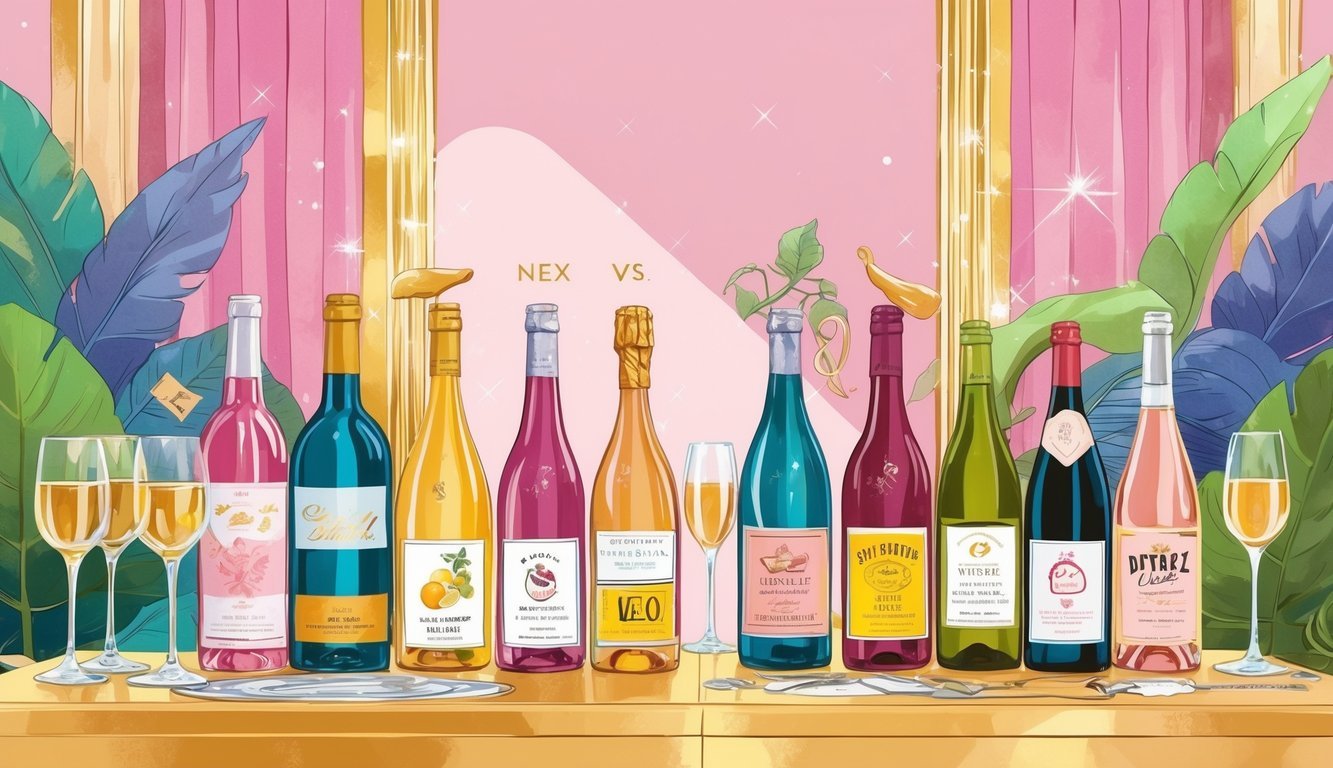PsychNewsDaily Publishers
100 Summit Drive
Burlington, MA, 01803
Telephone: (320) 349-2484
PsychNewsDaily Publishers
100 Summit Drive
Burlington, MA, 01803
Telephone: (320) 349-2484
Wine prices vary due to factors like vineyard location, winemaking methods, and brand hype, but affordable options exist that rival expensive wines in flavor and quality.

A Broke Wine Lover’s Guide to Sipping Smart
Ever look at a bottle of wine and wonder why it costs more than a whole night out? The price tags can get ridiculous. Things like vineyard location, bottle age, and brand hype all play a part in driving up costs. Still, you don’t actually need a fat wallet to enjoy wine.
You can totally find tasty alternatives that deliver the same joy, minus the financial regret. There are plenty of affordable wines out there that rival their expensive cousins in flavor and quality. This guide will show you how to spot those hidden gems, so you can sip smart and skip the stress.
If you’re new to wine or just sick of overpriced bottles, you’re in the right place. Get ready for straightforward tips and easy options that make finding good wine a breeze.

Wines get expensive for a bunch of reasons—think grape origins, winemaking methods, and even reviews. All these details push up the final price you see on the shelf.
Making wine can be tricky and expensive. Vineyards with low grape yields produce less wine, so bottles from there cost more.
Winemakers sometimes use fancy techniques that take extra time or money. Aging wine in oak barrels, for example, adds flavor but also jacks up the cost.
Wineries that invest in high-tech equipment often pass those costs on to you. It’s not always obvious, but it adds up.
Terroir is just a fancy word for the natural environment where grapes grow. Soil, climate, and grape type all shape the taste. Famous regions like Bordeaux or Napa Valley charge more because their terroir is rare—or just hyped up.
Oenology, the science of wine and winemaking, also plays a role. Skilled winemakers use their know-how to boost quality, which often means pricier bottles.
So when you see a big price tag, it’s usually a mix of special terroir and expert winemaking.
Wine critics and big magazines like Wine Spectator can send prices soaring. When a wine gets a high score, demand goes up, and so does the price.
Labels matter too. Recognizable names or flashy designs make a wine feel luxurious, even if the liquid inside isn’t much different from cheaper options.
If you spot a famous label or a high score, just know you’re probably paying extra for the hype.

You really don’t need to drop a ton of cash to get good wine. There are clever swaps out there that deliver similar flavors for way less. If you’re willing to try lesser-known grapes and regions, your taste buds (and wallet) will thank you.
Love Cabernet Sauvignon from Napa but not the price? Give Petite Sirah or Carignan a shot. They’re bold and rich, just not as expensive.
If you’re into Barolo or Barbaresco, try wines made from Montepulciano or Barbera grapes. They’re Italian too, and bring complexity without the sticker shock.
For Zinfandel fans, check out some Italian reds like Brunello, or hunt down California wines made from less popular red grapes. You’ll find richness and spice without the splurge.
If Chardonnay is your thing but the price isn’t, swap it for Trebbiano from Italy. Trebbiano brings fresh, crisp flavors and won’t break the bank.
Look for whites from smaller or off-the-radar producers like Emidio Pepe—they often deliver great quality for less. Don’t be afraid to explore lesser-known white grapes at your local shop; you might stumble onto a steal.
If you want something richer, try budget-friendly whites from the Southern Rhone or Oregon. They can surprise you with both quality and price.
You can score value wines outside Napa or the big-name Italian spots. Southern Rhone, for example, puts out reds and whites that taste awesome without costing a fortune.
Watch for regions growing grapes like Carignan and Petite Sirah for bold, budget reds. Italian grapes like Montepulciano and whites such as Trebbiano don’t get enough love, but they pack plenty of flavor.
Joining a wine club that focuses on small producers can help you discover these hidden gems, and your wallet will appreciate it.

You can totally find tasty wines without spending a lot. Tons of great options cost under $10 or $20—you just need to know what to look for. Picking a wine that fits your taste and budget isn’t as tough as it seems.
Look for bottles from less famous wine regions. They’re usually cheaper but still deliver solid taste. Brands from Chile, Spain, and Portugal often offer great bang for your buck.
Check out Barefoot, Yellow Tail, or Bogle. These brands make reds and whites lots of people like, and they’re easy to find for less than $10.
Absolutely. Many wines under $20 come from well-known places but use simpler grapes or less flashy labels. Try bottles from California, Argentina, or France—they often fit the bill.
Start by figuring out what flavors you enjoy—sweet, dry, fruity, or spicy. Read the tasting notes on the label or just ask someone at the store for advice. Buying smaller bottles first lets you experiment without a big commitment.
Think about what the recipient likes to drink. A clean, balanced wine with a nice-looking label makes a good impression. Try to avoid wines that look too fancy for the price; they can end up disappointing.
Watch out for wines that taste overly sweet or seem to have fake flavors. I’d skip picking a bottle just because it’s cheap—try to glance at ratings or a few reviews if you can.
Also, if you see a bottle with a damaged or really old label, it’s probably best to leave it on the shelf.